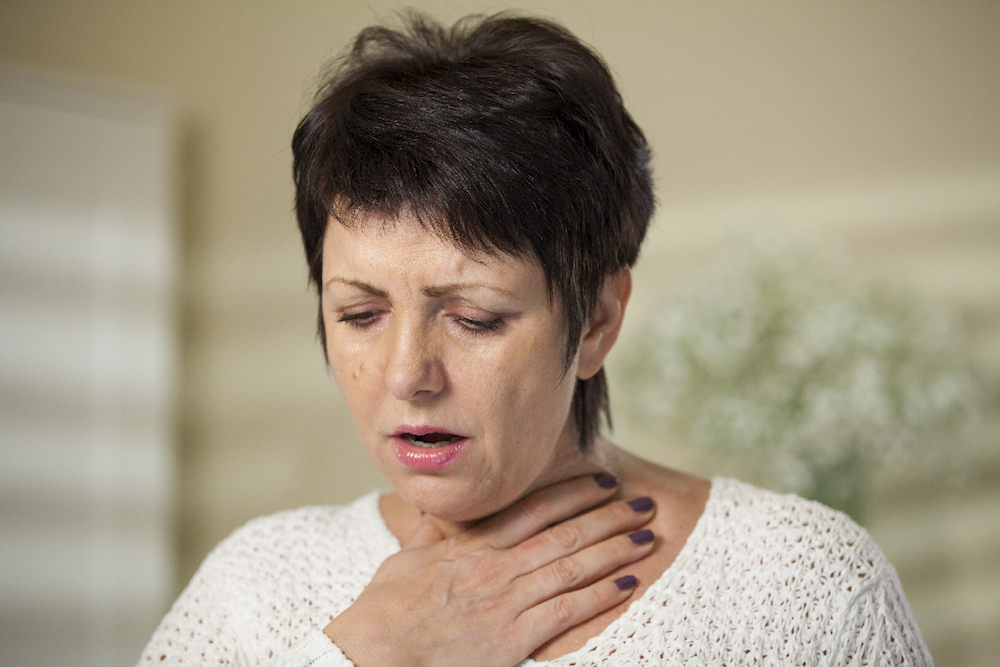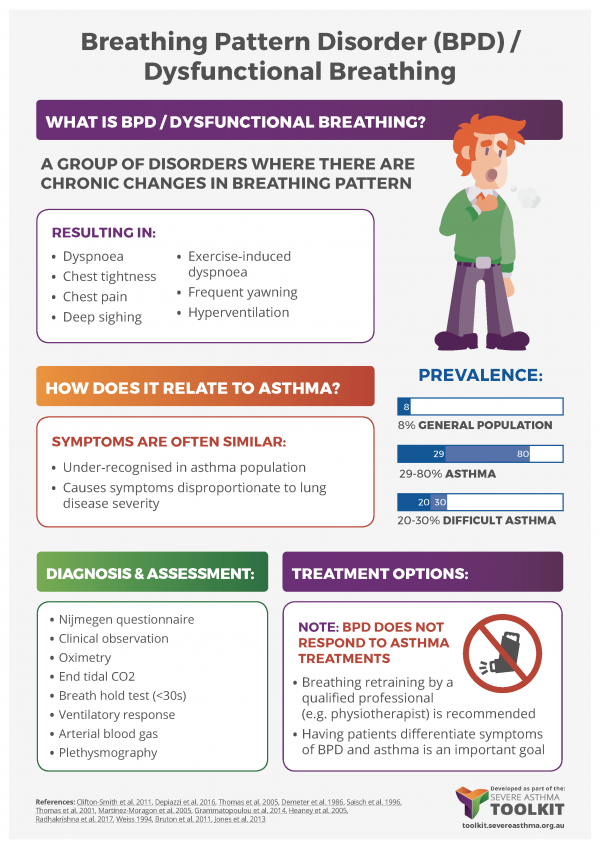Breathing distress (dyspnoea) can be a symptom of several different diseases. However, there are times when a person’s breathing pattern and/or their sensation of breathing difficulty can be the main cause of their breathing distress. This situation is termed ‘Dysfunctional breathing’. There is no universally agreed definition for dysfunctional breathing, as the condition remains poorly characterised.
Suggestions have however been proposed and include:
- Inappropriate breathing which is persistent enough to cause symptoms, with no apparent organic cause (Clifton-Smith et al. 2011).
- Change in the normal biomechanical breathing patterns that result in intermittent or chronic symptoms, which may be both respiratory and non-respiratory. This alteration may be due to structural causes, or much more commonly, be functional ( that is, a disorder of breathing function without an accompanying structural abnormality) (Depiazzi et al. 2016).
Dysfunctional breathing may, and often does, coexist with organic lung disease. Conversely, the lack of an organic lung disease to explain breathlessness does not always imply a diagnosis of dysfunctional breathing. A diagnosis of dysfunctional breathing should be made only after exclusion or adequate treatment of any organic disease (Boulding et al. 2016).
It is particularly challenging to diagnose dysfunctional breathing in the presence of physiological or structural lung disease. In such cases, dysfunctional breathing may be present if the symptoms are disproportionate to the severity of lung disease.



